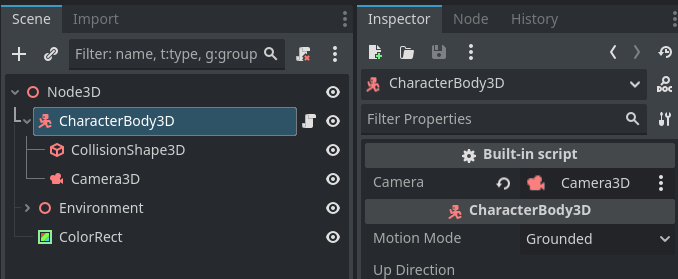I adjusted the code to be usable with movement as well and simplified it a bit ![]() enjoy
enjoy

extends CharacterBody3D
@export var camera: Node3D
var movement_speed: float = 150.0
var rotation_speed: float = 0.005
var ease_curve: float = 0.1
var target_rotation: Vector2
func _ready() -> void:
Input.mouse_mode = Input.MOUSE_MODE_CAPTURED
func _unhandled_input(event: InputEvent) -> void:
if event is InputEventMouseMotion:
var mouse_motion_event: InputEventMouseMotion = event as InputEventMouseMotion
target_rotation -= mouse_motion_event.relative * rotation_speed
target_rotation.y = clampf(target_rotation.y, PI/-2, PI/2)
func _physics_process(delta: float) -> void:
rotation.y = lerp_angle(rotation.y, target_rotation.x, ease(delta, ease_curve))
camera.rotation.x = lerp_angle(camera.rotation.x, target_rotation.y, ease(delta, ease_curve))
var movement_direction: Vector3 = Vector3.ZERO
if Input.is_action_pressed("ui_up"):
movement_direction += Vector3.FORWARD
if Input.is_action_pressed("ui_down"):
movement_direction += Vector3.BACK
if Input.is_action_pressed("ui_right"):
movement_direction += Vector3.RIGHT
if Input.is_action_pressed("ui_left"):
movement_direction += Vector3.LEFT
velocity = basis * movement_direction * delta * movement_speed
move_and_slide()